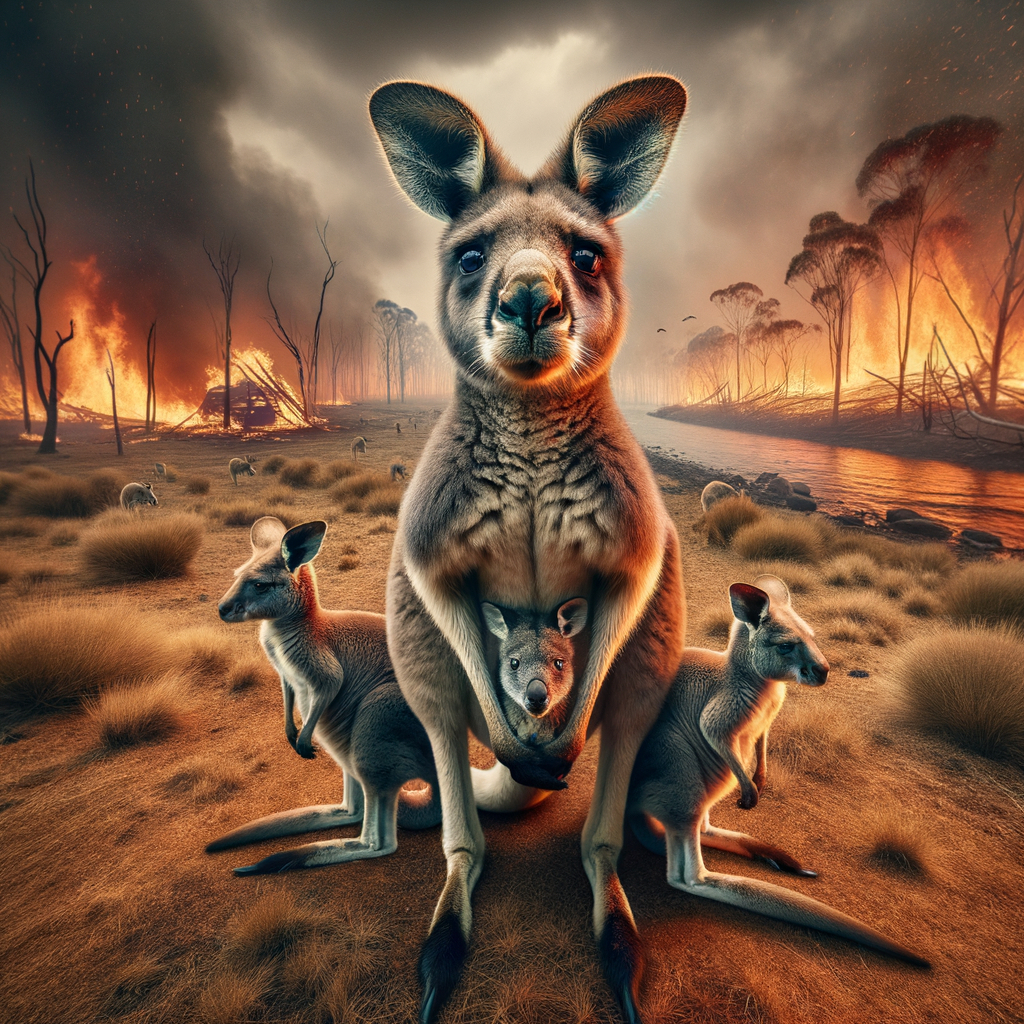Physical Address
304 North Cardinal St.
Dorchester Center, MA 02124
Physical Address
304 North Cardinal St.
Dorchester Center, MA 02124

Australia, known for its unique and diverse wildlife, is witnessing a significant shift in the ecosystem due to climate change. From the Great Barrier Reef’s colourful marine life to the eucalyptus forests hosting koalas, the effects are far-reaching and devastating. This article explores the profound impact of climate change on Australian wildlife.
The increasing global temperature is one of the most evident signs of climate change. Australia has experienced a 1°C increase in average temperature since 1910, which may seem insignificant but has drastic implications for wildlife. Heatwaves have become more frequent and intense leading to mass deaths of animals such as flying foxes, which succumb to heat stress when temperatures rise above 42°C.
Prolonged periods of drought have dried up rivers and wetlands, affecting species like waterbirds and freshwater fish that rely on these habitats for survival. The Macquarie Marshes, an internationally recognised wetland in New South Wales, has seen a decline in waterbird populations due to reduced water availability.
Climate change has led to an increased frequency and intensity of bushfires. The 2019-2020 bushfire season was one of Australia’s worst, with over 18 million hectares burnt. It resulted in an estimated loss of over a billion animals including mammals, birds, reptiles and insects; some species might even face extinction as their habitats were completely destroyed.
The Great Barrier Reef is suffering from ocean warming leading to coral bleaching events. Warmer waters cause corals to expel the algae living in their tissues, leading to a white appearance known as ‘bleaching’. If the temperature doesn’t return to normal quickly, corals can die. Additionally, increased carbon dioxide absorption by oceans leads to acidification which further threatens marine life.
Climate change is causing shifts in the distribution of species. Some animals are moving towards cooler regions, while others are changing their behaviours to adapt. For instance, birds are laying eggs earlier than usual due to warmer springs. However, not all species can adapt or migrate fast enough, leading to population declines.
Changes in climate favour certain invasive species that can outcompete native wildlife for resources. The cane toad is one such example; its range has expanded due to warmer temperatures and wetter conditions.
Australia’s high level of endemism means that many species are found nowhere else on Earth. These unique creatures often have specific habitat requirements making them particularly vulnerable to climate change. The mountain pygmy-possum is one such animal at risk; warming temperatures result in less snowfall which they rely on for hibernation and food storage.
Addressing this crisis requires global efforts to reduce greenhouse gas emissions and slow down global warming. Locally, conservation efforts must focus on protecting habitats from degradation and managing invasive species. Research into understanding how different species respond to climate change will also be crucial for effective conservation planning.
In conclusion, climate change poses a significant threat to Australian wildlife with impacts ranging from heatwaves and droughts affecting terrestrial animals, ocean warming impacting marine life, bushfires destroying habitats and shifts in distribution patterns disrupting ecosystems. Without urgent action, the unique biodiversity of Australia could be lost forever.